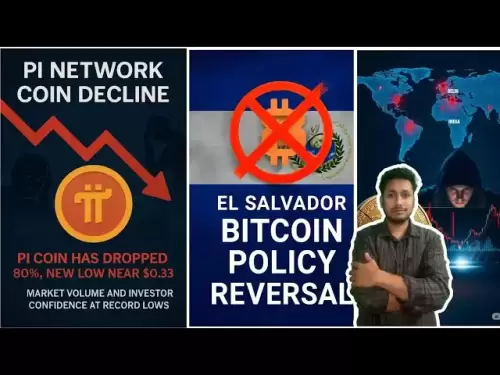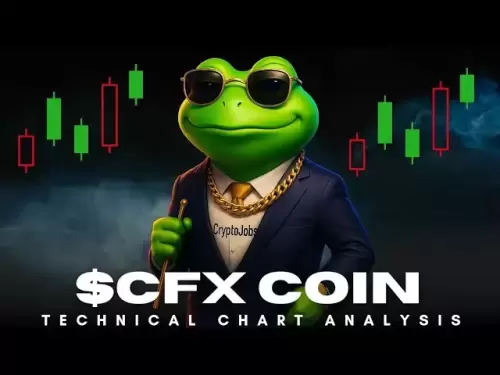-
 Bitcoin
Bitcoin $119700
0.53% -
 Ethereum
Ethereum $4508
5.39% -
 XRP
XRP $3.270
2.86% -
 Tether USDt
Tether USDt $1.000
0.00% -
 BNB
BNB $831.0
2.92% -
 Solana
Solana $189.6
6.89% -
 USDC
USDC $0.9999
-0.01% -
 Dogecoin
Dogecoin $0.2350
2.92% -
 TRON
TRON $0.3500
1.34% -
 Cardano
Cardano $0.8420
6.73% -
 Chainlink
Chainlink $23.26
8.42% -
 Hyperliquid
Hyperliquid $44.42
1.44% -
 Stellar
Stellar $0.4512
3.16% -
 Sui
Sui $3.895
5.15% -
 Bitcoin Cash
Bitcoin Cash $618.7
5.88% -
 Hedera
Hedera $0.2601
4.43% -
 Ethena USDe
Ethena USDe $1.001
0.01% -
 Avalanche
Avalanche $24.45
4.90% -
 Litecoin
Litecoin $128.1
5.41% -
 Toncoin
Toncoin $3.454
1.64% -
 UNUS SED LEO
UNUS SED LEO $9.065
0.44% -
 Shiba Inu
Shiba Inu $0.00001359
3.41% -
 Uniswap
Uniswap $11.42
1.78% -
 Polkadot
Polkadot $4.165
6.36% -
 Cronos
Cronos $0.1664
-0.50% -
 Ethena
Ethena $0.8108
1.79% -
 Dai
Dai $1.000
0.00% -
 Pepe
Pepe $0.00001213
5.22% -
 Bitget Token
Bitget Token $4.438
0.25% -
 Aave
Aave $313.3
5.02%
Who is the founder of Ethereum? What is the background?
Vitalik Buterin, a computer science and cryptography expert, founded Ethereum, driven by Bitcoin's limitations. His background profoundly shaped Ethereum's design, focusing on smart contracts and decentralized applications.
Mar 07, 2025 at 06:49 am
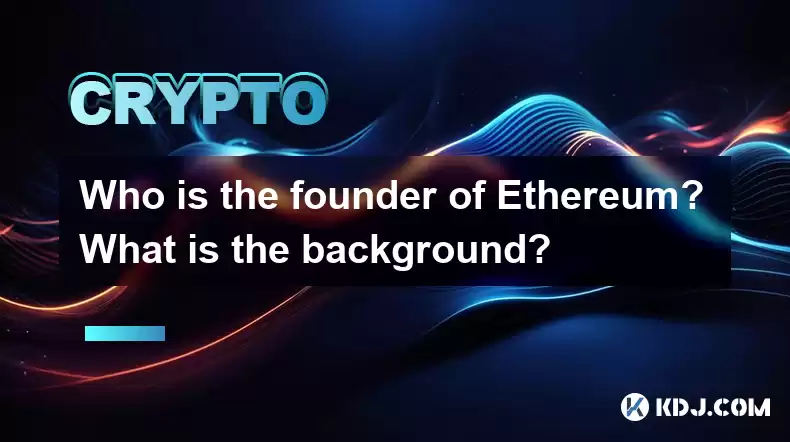
Key Points:
- Vitalik Buterin is the founder of Ethereum.
- He has a strong background in computer science and cryptography.
- His vision for Ethereum stemmed from his involvement in the Bitcoin community and his recognition of its limitations.
- His background significantly shaped Ethereum's design and philosophy.
Who is the Founder of Ethereum?
Vitalik Buterin is the public face and widely acknowledged founder of Ethereum. He's not solely responsible, as Ethereum's creation involved a collaborative team, but Buterin conceived the core idea and played a pivotal role in its development and initial launch. He's a prominent figure in the cryptocurrency space, known for his intellectual contributions and outspoken views on blockchain technology. His influence extends beyond Ethereum, shaping discussions and advancements within the broader crypto ecosystem.
What is Vitalik Buterin's Background?
Buterin's background is heavily rooted in computer science and mathematics. From a young age, he demonstrated a keen interest in these fields. He was exposed to Bitcoin early on, recognizing its potential but also its limitations. This exposure significantly influenced his later work. He honed his programming skills and developed a deep understanding of cryptographic principles, essential foundations for building a decentralized platform like Ethereum. His involvement with Bitcoin Magazine, where he was a writer, further solidified his understanding of blockchain technology.
How Did Buterin's Background Shape Ethereum?
Buterin's background profoundly influenced Ethereum's design and philosophy. His understanding of computer science enabled him to architect a platform that could support more complex applications than Bitcoin. His deep knowledge of cryptography ensured the security and integrity of the Ethereum network. His experience within the Bitcoin community gave him insight into both the strengths and weaknesses of existing blockchain technology, informing his vision for a more adaptable and versatile platform. He aimed to build a platform that could support not just currencies but also decentralized applications (dApps) and smart contracts.
The Genesis of Ethereum: From Bitcoin to a Smarter Contract Platform
Buterin's involvement with Bitcoin, initially as a writer and later as an active contributor, revealed limitations. He saw Bitcoin as primarily a digital currency, lacking the flexibility for more sophisticated applications. This sparked the idea for Ethereum: a platform that would support smart contracts, self-executing agreements with the terms of the agreement directly written into code. This would allow for the creation of decentralized applications (dApps) with a wide range of functionalities.
Ethereum's Development: A Collaborative Effort
While Buterin is the primary founder, Ethereum's development was a collaborative effort. A team of developers, researchers, and community members contributed significantly to its design, implementation, and ongoing maintenance. The collaborative nature reflects Ethereum's decentralized ethos, emphasizing open-source development and community involvement. The team built upon Buterin's initial vision, contributing their expertise to refine and enhance the platform's functionality and security.
The White Paper and its Significance
Buterin authored Ethereum's white paper, a crucial document that outlined the platform's vision, technical specifications, and goals. This document served as a roadmap for the development team and attracted many individuals to the project. It detailed the concepts of smart contracts, the Ethereum Virtual Machine (EVM), and the overall architecture of the network, solidifying the technical foundation of Ethereum.
Building the Ethereum Network: Step-by-Step
The creation of the Ethereum network involved several key steps:
- Conceptualization: Defining the core principles and functionalities of Ethereum.
- White Paper Publication: Disseminating the vision and technical specifications.
- Team Formation: Assembling a group of skilled developers.
- Code Development: Writing and testing the Ethereum codebase.
- Testnet Launch: Deploying a test network for experimentation.
- Mainnet Launch: Officially launching the Ethereum blockchain.
Ethereum's Continued Evolution:
Ethereum's development is an ongoing process. The platform continues to evolve through upgrades and improvements, reflecting the dynamic nature of blockchain technology. These upgrades often involve addressing scalability issues, enhancing security, and introducing new functionalities. Buterin remains actively involved in shaping the future direction of Ethereum, contributing to discussions and proposals for improvements.
Common Questions and Answers:
Q: Was Vitalik Buterin the sole founder of Ethereum?
A: No, while Vitalik Buterin is widely recognized as the founder, Ethereum's development involved a collaborative team. He provided the initial vision and much of the core architecture, but many others contributed to the project's success.
Q: What inspired Buterin to create Ethereum?
A: Buterin's experience with Bitcoin highlighted its limitations in terms of scalability and application diversity. He envisioned a platform that could support more complex applications and smart contracts, leading to the creation of Ethereum.
Q: What is the significance of Ethereum's white paper?
A: The white paper served as the foundational document for Ethereum, outlining its vision, technical specifications, and roadmap. It attracted developers and investors to the project and guided its development.
Q: Is Ethereum still under active development?
A: Yes, Ethereum continues to evolve through ongoing development efforts focused on improvements, upgrades, and the implementation of new features to address scalability and security concerns.
Q: What is the role of the Ethereum community in the project's success?
A: The Ethereum community plays a vital role, contributing to the development, testing, and overall improvement of the platform. Its active participation reflects Ethereum's decentralized nature and commitment to open-source development.
Disclaimer:info@kdj.com
The information provided is not trading advice. kdj.com does not assume any responsibility for any investments made based on the information provided in this article. Cryptocurrencies are highly volatile and it is highly recommended that you invest with caution after thorough research!
If you believe that the content used on this website infringes your copyright, please contact us immediately (info@kdj.com) and we will delete it promptly.
- Unich's OTC Exchange: Surging with $1.2B Volume – What's the Hype?
- 2025-08-13 02:50:11
- MoonBull's Explosive Moves: Your Crypto Whitelist Ticket to Ride!
- 2025-08-13 02:30:11
- MAGACOIN Finance: Don't Miss the Presale Bonus!
- 2025-08-13 02:30:11
- Trump's Crypto Kingdom: $2.4 Billion and Counting
- 2025-08-13 02:50:11
- Solana, LSTs, and SEC Approval: A New Dawn for Crypto?
- 2025-08-13 02:55:12
- Bitcoin's Profit Surge: Unpacking the BTC Value Boom
- 2025-08-13 02:55:12
Related knowledge

How to purchase Aragon (ANT)?
Aug 09,2025 at 11:56pm
Understanding Aragon (ANT) and Its PurposeAragon (ANT) is a decentralized governance token that powers the Aragon Network, a platform built on the Eth...

Where to trade Band Protocol (BAND)?
Aug 10,2025 at 11:36pm
Understanding the Role of Private Keys in Cryptocurrency WalletsIn the world of cryptocurrency, a private key is one of the most critical components o...

What is the most secure way to buy Ocean Protocol (OCEAN)?
Aug 10,2025 at 01:01pm
Understanding Ocean Protocol (OCEAN) and Its EcosystemOcean Protocol (OCEAN) is a decentralized data exchange platform built on blockchain technology,...
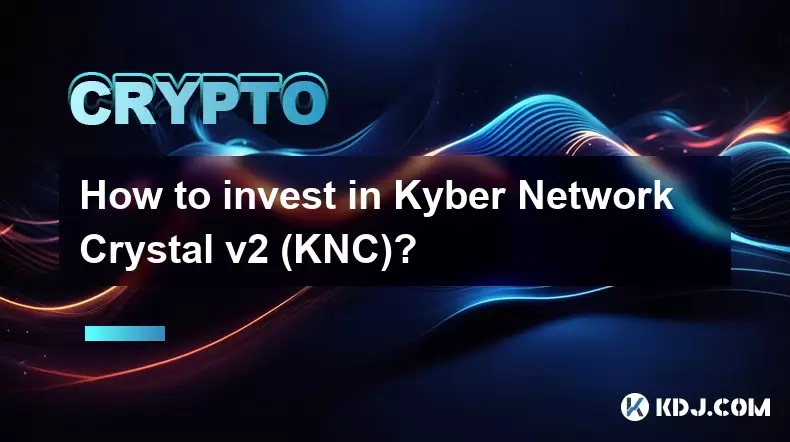
How to invest in Kyber Network Crystal v2 (KNC)?
Aug 12,2025 at 05:21pm
Understanding Kyber Network Crystal v2 (KNC)Kyber Network is a decentralized liquidity hub built on the Ethereum blockchain that enables instant token...

Where can I buy UMA (UMA)?
Aug 07,2025 at 06:42pm
Understanding UMA and Its Role in Decentralized FinanceUMA (Universal Market Access) is an Ethereum-based decentralized finance (DeFi) protocol design...
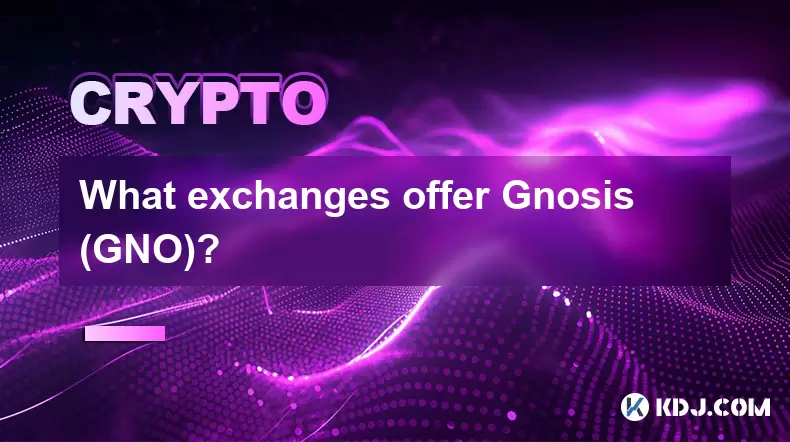
What exchanges offer Gnosis (GNO)?
Aug 12,2025 at 12:42pm
Overview of Gnosis (GNO) and Its Role in the Crypto EcosystemGnosis (GNO) is a decentralized prediction market platform built on the Ethereum blockcha...

How to purchase Aragon (ANT)?
Aug 09,2025 at 11:56pm
Understanding Aragon (ANT) and Its PurposeAragon (ANT) is a decentralized governance token that powers the Aragon Network, a platform built on the Eth...

Where to trade Band Protocol (BAND)?
Aug 10,2025 at 11:36pm
Understanding the Role of Private Keys in Cryptocurrency WalletsIn the world of cryptocurrency, a private key is one of the most critical components o...

What is the most secure way to buy Ocean Protocol (OCEAN)?
Aug 10,2025 at 01:01pm
Understanding Ocean Protocol (OCEAN) and Its EcosystemOcean Protocol (OCEAN) is a decentralized data exchange platform built on blockchain technology,...

How to invest in Kyber Network Crystal v2 (KNC)?
Aug 12,2025 at 05:21pm
Understanding Kyber Network Crystal v2 (KNC)Kyber Network is a decentralized liquidity hub built on the Ethereum blockchain that enables instant token...

Where can I buy UMA (UMA)?
Aug 07,2025 at 06:42pm
Understanding UMA and Its Role in Decentralized FinanceUMA (Universal Market Access) is an Ethereum-based decentralized finance (DeFi) protocol design...

What exchanges offer Gnosis (GNO)?
Aug 12,2025 at 12:42pm
Overview of Gnosis (GNO) and Its Role in the Crypto EcosystemGnosis (GNO) is a decentralized prediction market platform built on the Ethereum blockcha...
See all articles























